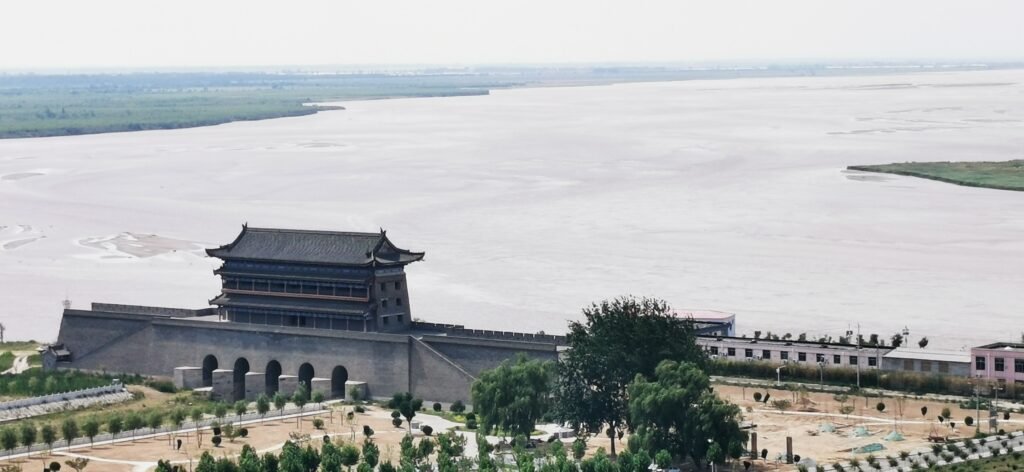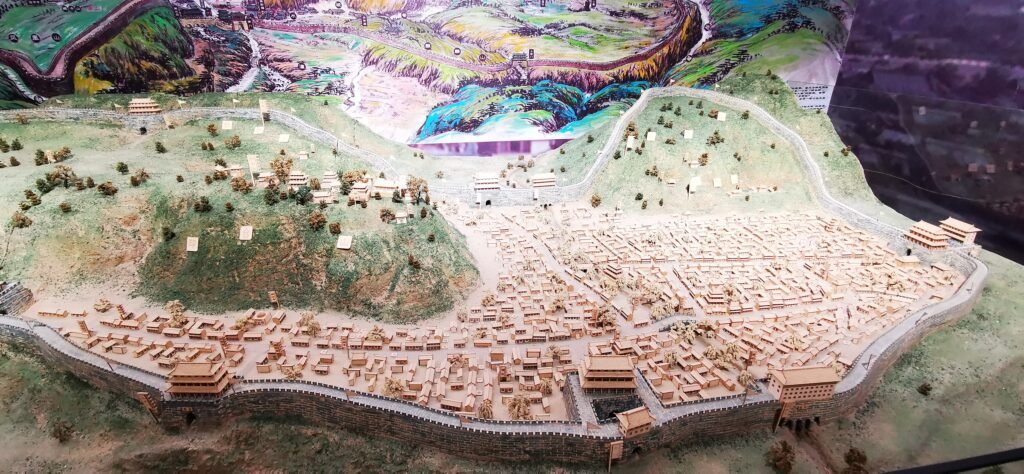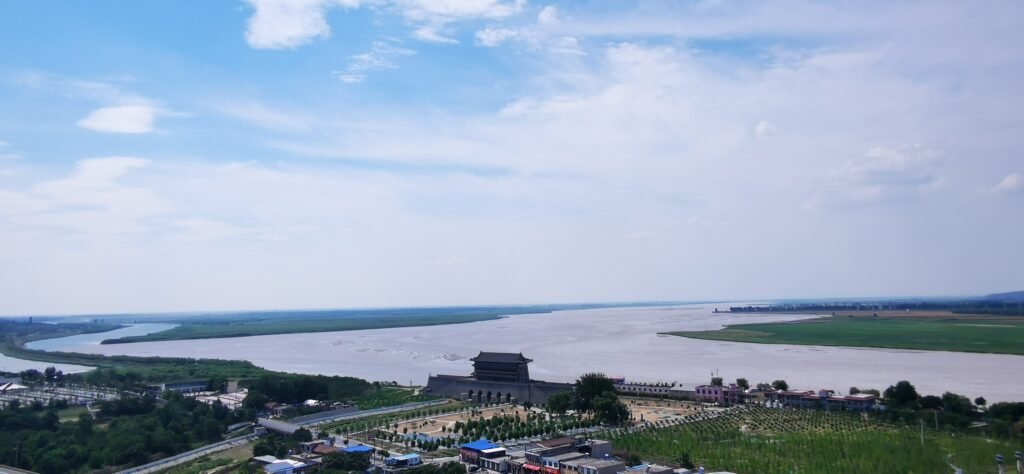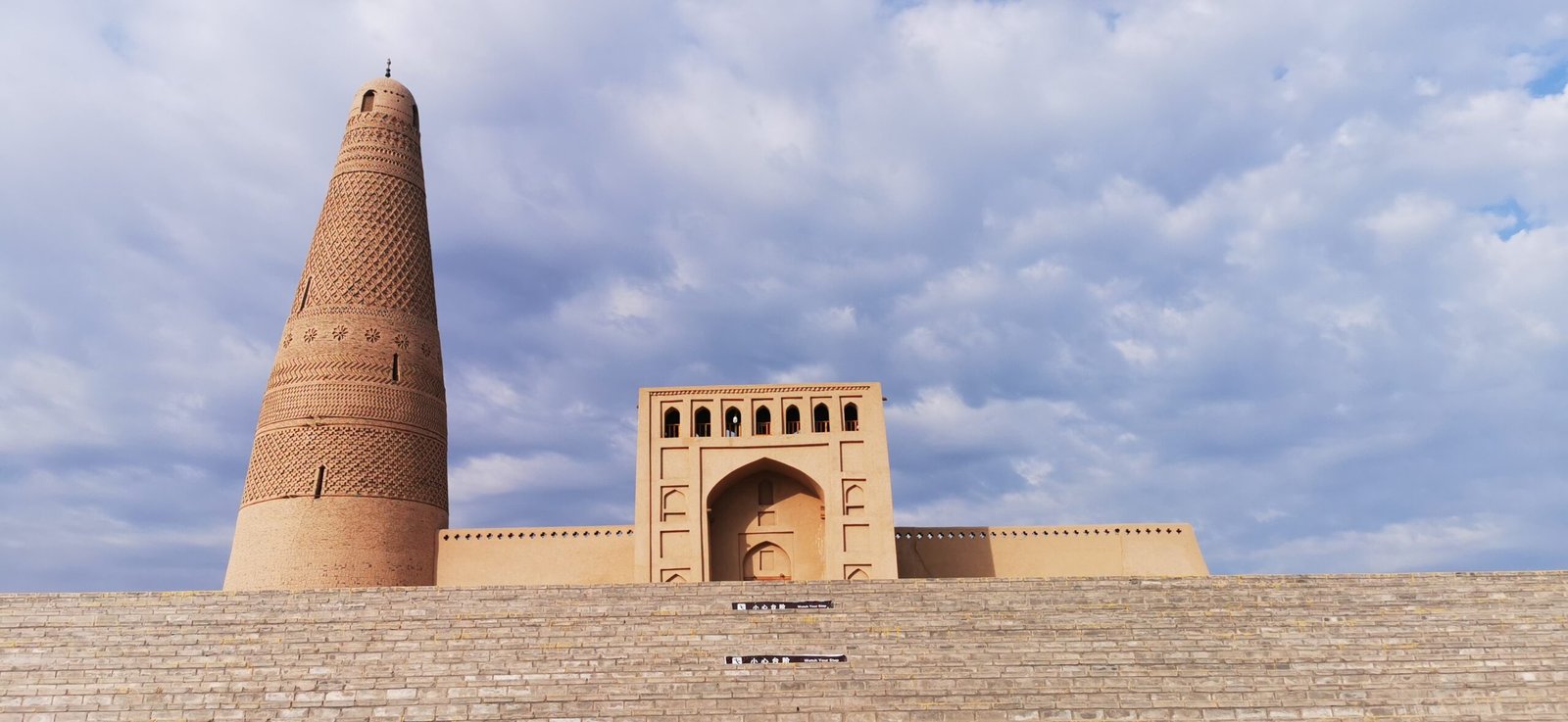Tongguan, also known as Tong Pass (潼关), is one of the most strategically significant mountain passes in Chinese history. Nestled at the confluence of the Yellow River and the Qinling Mountains, this military pass served as a key threshold between northern and southern China. Over centuries, Tongguan has borne witness to countless historical events, wars, and dynastic transitions. It stands not only as a military stronghold but also as a remarkable example of ancient Chinese landscape planning, defense architecture, and cultural integration.
Geographical Importance of Tongguan
Located in eastern Shaanxi Province, Tongguan lies at the eastern edge of the Guanzhong Plain, acting as a bottleneck between the Loess Plateau in the north and the Central Plain in the south. The mountain pass guards the eastern gateway to the ancient capital of Chang’an (modern Xi’an), making it a linchpin in both geography and history.

The name “Tongguan” literally means “the pass of convergence,” reflecting its position at the junction of the Wei, Luo, and Yellow Rivers. The rugged terrain and narrow valley made it an ideal site for a natural military defense, while its proximity to fertile lands enabled the development of surrounding settlements and traditional Chinese villages.
Tongguan as a Military Pass
Tongguan’s significance as a military pass dates back to the Warring States period (475–221 BCE), but it reached its zenith during the Tang dynasty (618–907). As a military pass, Tongguan was one of the so-called “Three Great Passes of Guanzhong,” along with Hangu Pass and Dasan Pass. During turbulent times, control of Tongguan often meant control of northern China.
In 756 CE, the An Lushan Rebellion erupted, and Tongguan became a critical point in defending the Tang dynasty’s heartland. Generals such as Gao Xianzhi and Geshu Han fought bitterly at this mountain pass, demonstrating how military architecture and terrain played a decisive role in imperial defense strategies.
Tongguan was fortified with stone walls, fortified watchtowers, and gatehouses constructed in traditional Chinese architecture styles. These elements are characteristic of ancient Chinese military engineering and reflect a fusion of form and function, designed to intimidate and endure.
The Architecture of Tongguan Fortress
What remains of Tongguan today provides a glimpse into the architectural prowess of ancient Chinese builders. Although much of the original structure is in ruins due to centuries of warfare and natural erosion, key elements like ramparts, foundation stones, and partial gates still stand.
The fortress was originally built following the principles of feng shui, harmonizing with the surrounding mountain landscape and river flow. The city walls, made of rammed earth and bricks, were reinforced with wood and later with stone. These materials were locally sourced and reflect the adaptation of architecture to regional conditions—a hallmark of Chinese traditional architecture.

Visitors can still find traces of old watchtowers and observation platforms, which were used to monitor troop movements and secure communication along the frontier. These architectural features are reminiscent of those seen in other famous military passes like Jiayuguan in the west and Shanhaiguan in the east, creating an unbroken chain of defensive infrastructure.
Tongguan and Traditional Chinese Villages
The area surrounding Tongguan has long been inhabited, giving rise to numerous traditional Chinese villages that echo the architectural styles and lifestyles of past dynasties. These villages, such as Yaozhou and Pucheng, preserve the cultural memory of the region, with courtyard homes (siheyuan), ancestral halls, and ancient temples.
In these villages, architecture is deeply intertwined with daily life. Buildings often use grey bricks, timber framing, and curved roofs, embodying the essence of traditional Chinese architecture. The decorative motifs and spatial layout reflect Confucian values, such as hierarchy, harmony, and respect for ancestors.
The proximity of these villages to Tongguan also indicates the symbiotic relationship between military infrastructure and civilian life. Many villagers historically served as logistical support for the garrison or were craftsmen contributing to the construction and maintenance of the military pass.

Cultural Legacy and Tourism
Tongguan’s military and architectural legacy has evolved into a cultural asset for modern tourism. Today, the site is a protected heritage area, and efforts have been made to preserve its remaining structures. Local authorities have developed walking trails, museums, and informative exhibits to help visitors better understand the mountain pass’s historical importance.
Tourists interested in Chinese ancient architecture can explore reconstructions of the original gates and towers, built using traditional techniques. These structures offer educational insight into how defensive architecture was both functional and symbolically powerful in ancient China.
Moreover, the surrounding traditional villages provide a living museum of Chinese rural culture. Visitors can stay in restored courtyard homes, enjoy local Shaanxi cuisine, and participate in seasonal festivals that reflect centuries-old customs.
Tongguan in Literature and Art
Tongguan has inspired countless poets, painters, and historians over the ages. Tang dynasty poets such as Du Fu and Cen Shen wrote moving verses about the desolation and grandeur of the pass, capturing its lonely beauty and strategic urgency.
In landscape painting, Tongguan often appears as a symbol of both strength and isolation. It is frequently depicted with jagged cliffs, mist-covered rivers, and walls blending into the mountains—a testament to how architecture and nature converge in the Chinese aesthetic.
These artistic representations not only enhance our appreciation of Tongguan’s scenic beauty but also emphasize the cultural depth associated with this historic military pass.
The Decline and Preservation of Tongguan
After the fall of the Tang dynasty, the strategic importance of Tongguan gradually diminished due to changes in political centers and military technology. Nevertheless, it remained a symbolic site and occasional military outpost well into the Qing dynasty.
In modern times, urban development and environmental changes have posed challenges to its preservation. However, a renewed interest in Chinese heritage, supported by local and national initiatives, has led to ongoing archaeological surveys and conservation projects.

Tongguan’s preservation is not only about protecting an ancient military site but also about keeping alive the narrative of Chinese civilization’s evolution across geography, politics, and architecture.
Conclusion: Tongguan’s Lasting Significance
Tongguan is more than just a military pass—it is a cultural landmark that encapsulates the military genius, architectural sophistication, and historical consciousness of ancient China. It symbolizes the meeting point of north and south, war and peace, human ingenuity and natural fortitude.
For those passionate about exploring Chinese military architecture and traditional Chinese villages, Tongguan offers a unique window into the past. Whether you’re tracing the paths of ancient armies, admiring the harmony of defensive structures with the mountains, or wandering through timeworn village streets, Tongguan tells a story that continues to resonate.

